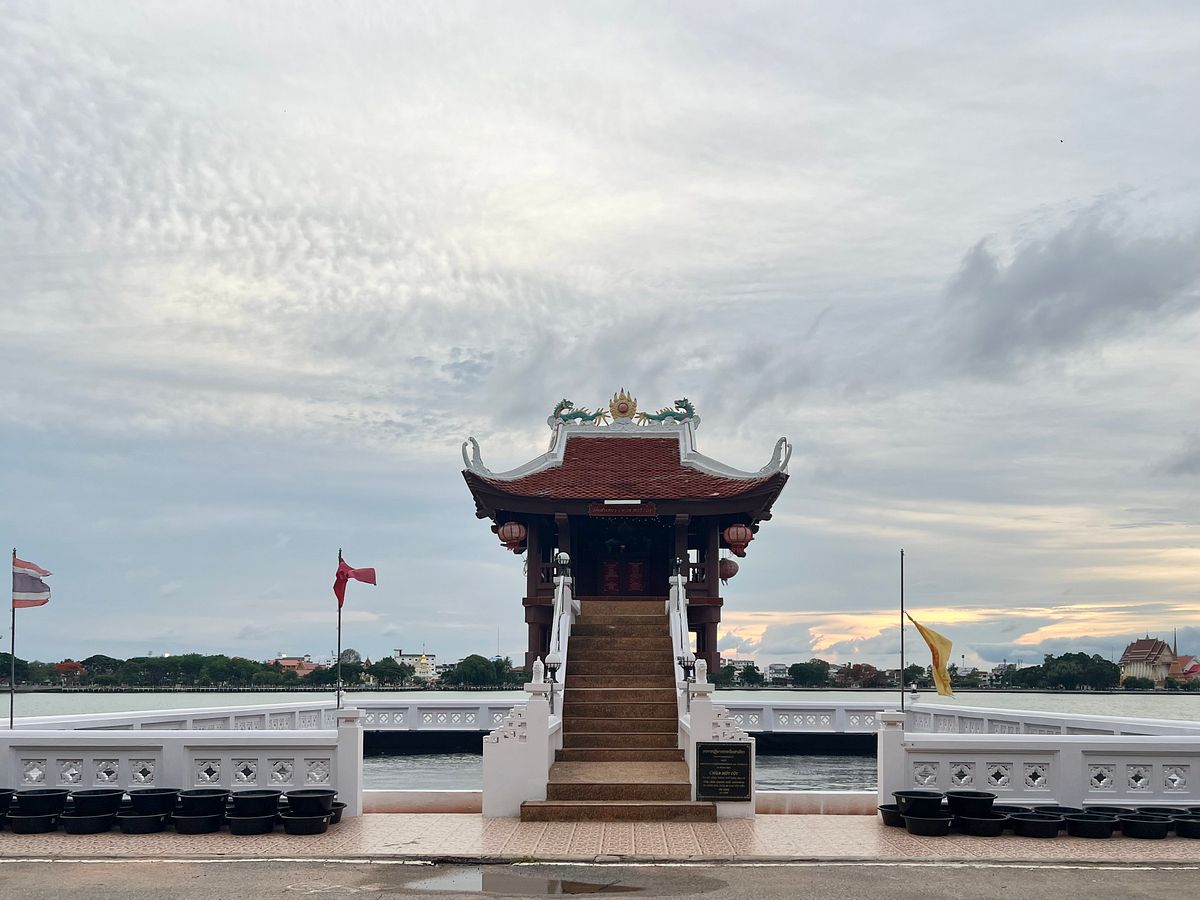On my last full day in Khon Kaen, Thailand, I was on a mission to catch the sunset, although the cloudy and gloomy sky didn’t give me much hope. Instead, I randomly stumbled upon a gate with signs written in Vietnamese. Out of curiosity, I decided to walk in, and the farther I walked, the more clearly I spotted a familiar image from afar: a one-pillar pagoda standing right on the edge of the reservoir.
Prior to my overnight train journey from Bangkok to Khon Kaen in May 2023, I had vaguely heard of the Vietnamese diaspora in the Isan region (Northeastern Thailand) near the Mekong River, but I never expected to randomly stumble upon Chùa Một Cột (One-Pillar Pagoda) during my return exactly two years later.
Built on the east side of the Bueng Kaen Nakhon Reservoir of Khon Kaen City, the replica of Chùa Một Cột (Thai: วัดเสาเดียว, pronounced as “wat sao diao”) was opened to public on March 14, 2008, and matches the same dimensions of the original pagoda in Hanoi. A renovation project was launched by the Consulate General of Vietnam in 2023, with funding from the Khon Kaen City Council and generous contributions from former Vice President Nguyễn Thị Doan and the Vietnamese diaspora community in Thailand. The presence of the pagoda itself reflects an effort not only to preserve Vietnamese culture abroad, but also to maintain Thai-Vietnamese friendship through shared cultural space and community connection.
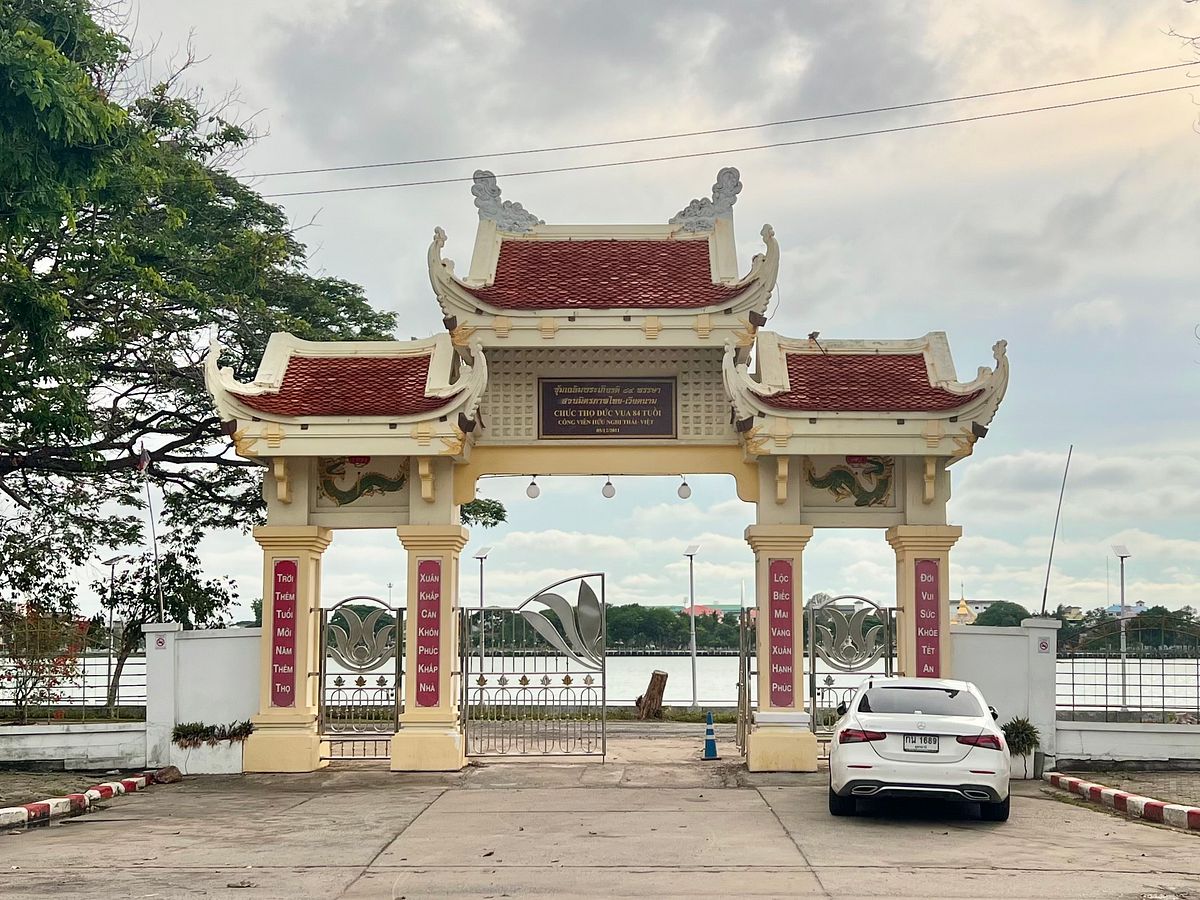
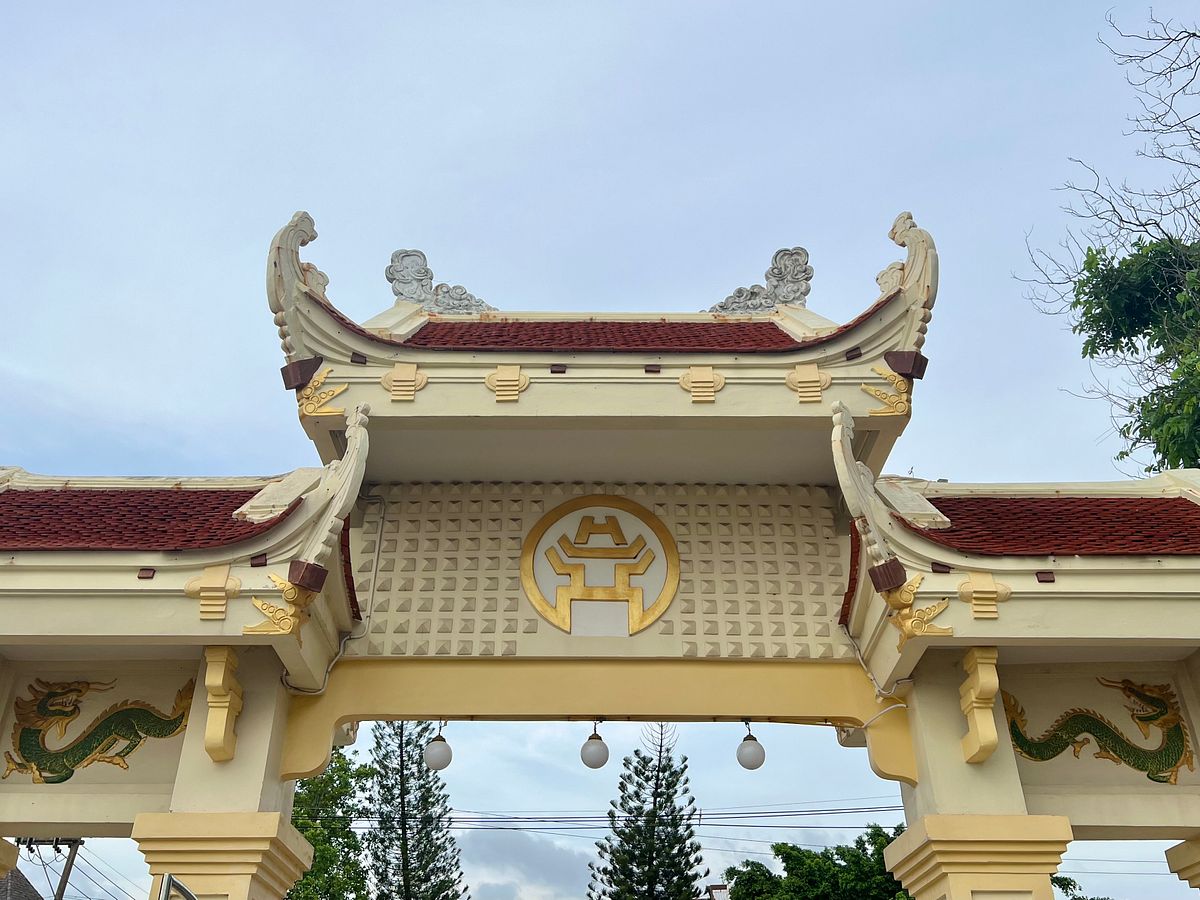
Entrance to the Thai-Vietnamese Friendship Park and Bueng Kaen Nakhon Reservoir (Khon Kaen, Thailand).
I stopped at the pagoda to pay respect and pray to Guanyin, then spent some time observing and appreciating the scenery. The pagoda is surrounded by open space and renovated walkways, and from here, you can easily spot the other temples of Khon Kaen across the reservoir. I noticed buckets of wet soil neatly placed near the walls, suggesting that there might be some renovation going on.
When I turned around, I saw two uncles looking in my direction. They smiled at me and said in Thai: “You can take photos from here.” For some reason, my instinct told me to ask them in my broken Thai: “Hello, can you speak Vietnamese?” To my surprise, they replied in Thai: “Can! You can speak Vietnamese too?”
I ended up talking to the uncles for about 30 minutes. They told me they were volunteers, taking turns to look after the pagoda. At that moment, they were preparing to plant lotus flowers in the small lake around the pagoda, and getting ready for a big event celebrating the 135th birth anniversary of President Hồ Chí Minh. They expected to welcome many Vietnamese community members from Khon Kaen and other provinces, along with officials from the Vietnamese embassy.

Chùa Một Cột in Khon Kaen, Thailand.
What amazed me the most wasn’t just their dedication, but how fluently they spoke Vietnamese in a central Vietnamese accent, despite being born and raised in this region. Especially considering the long history of “Thaification” — a part of the nationalist policies reinforced by the Thai state in the early 20th century, in which immigrants and people of ethnic groups, including Vietnamese who fled the Indochina War and arrived between 1945 and 1946, were expected to assimilate into dominant Central Thai culture and society.
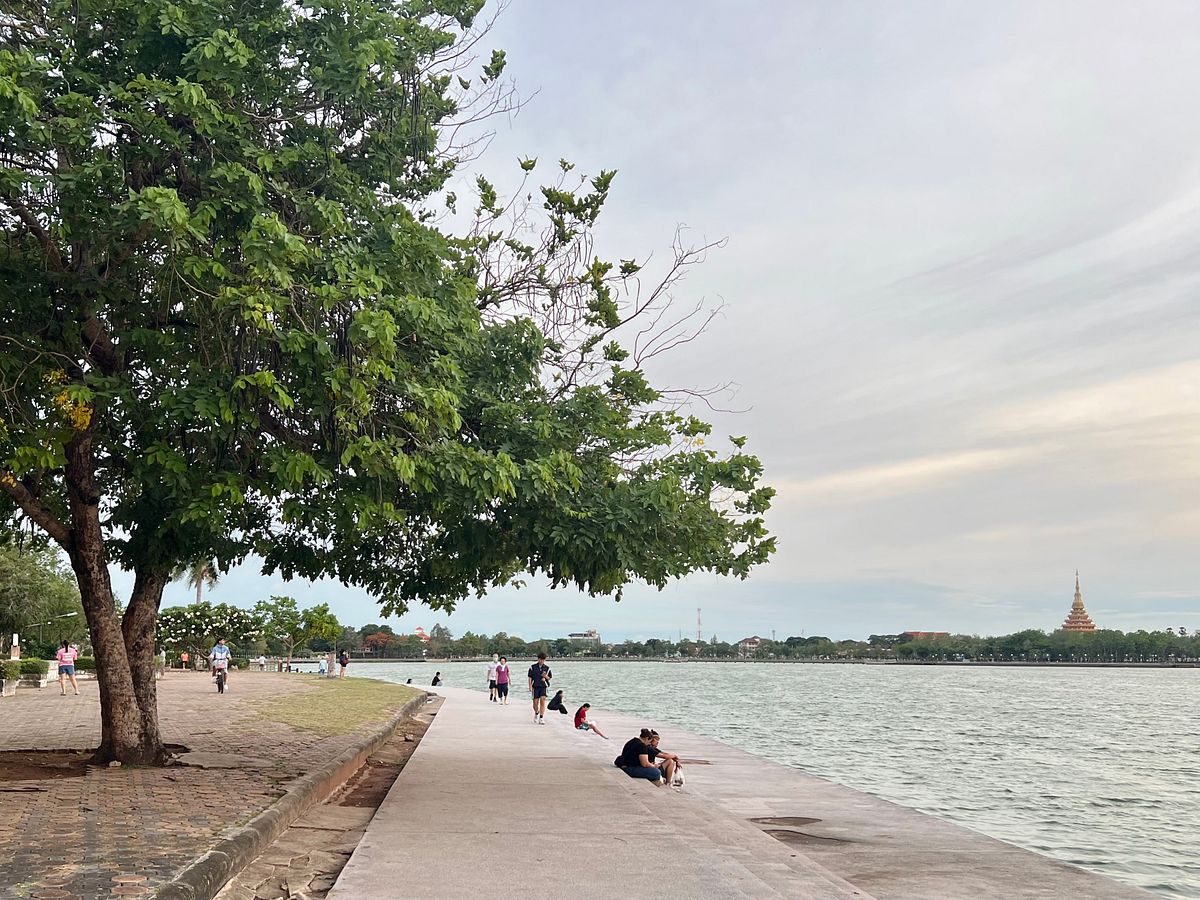
Open area of Bueng Kaen Nakhon Reservoir (Khon Kaen, Thailand).
After saying goodbye, I spent the rest of the afternoon sitting by the lakeside, people-watching and appreciating the view. It was drizzling a bit, so the sunset never appeared. Among the people and families jogging and walking by, quite a lot of them paused at the pagoda to pay respect to Guanyin. We don’t know whether they are Vietnamese descendants, but perhaps that’s not the main point. The pagoda itself feels like a meeting point for the Vietnamese community, cultural exchanges, random encounters for anyone passing through. Through what might seem like small gestures by the volunteers and community members, it reflects a bigger effort of preserving the Vietnamese culture abroad, which coexists in harmony with the surrounding mainstream culture.
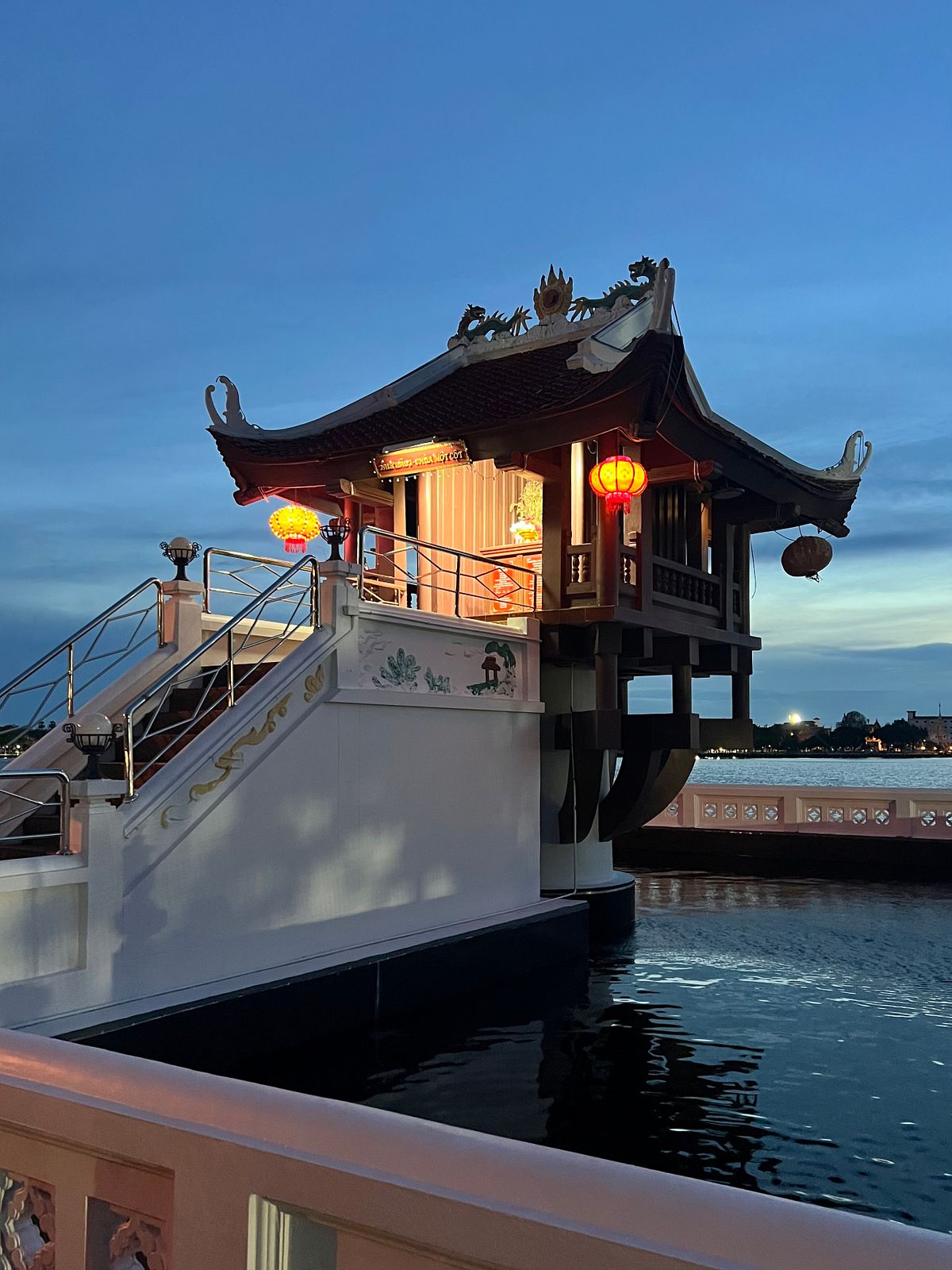
Chùa Một Cột in Khon Kaen, Thailand.
I couldn’t stay for long, as I had to continue my own journey heading northeast towards the Mekong River at the Thai-Lao border. But in the midst of uncertainty about the future, as someone who has been living life on the move for more than a decade, the encounter by the pagoda was a gentle reminder: home isn’t always a physical place, sometimes it’s a language spoken with kindness, in the middle of somewhere unfamiliar.

